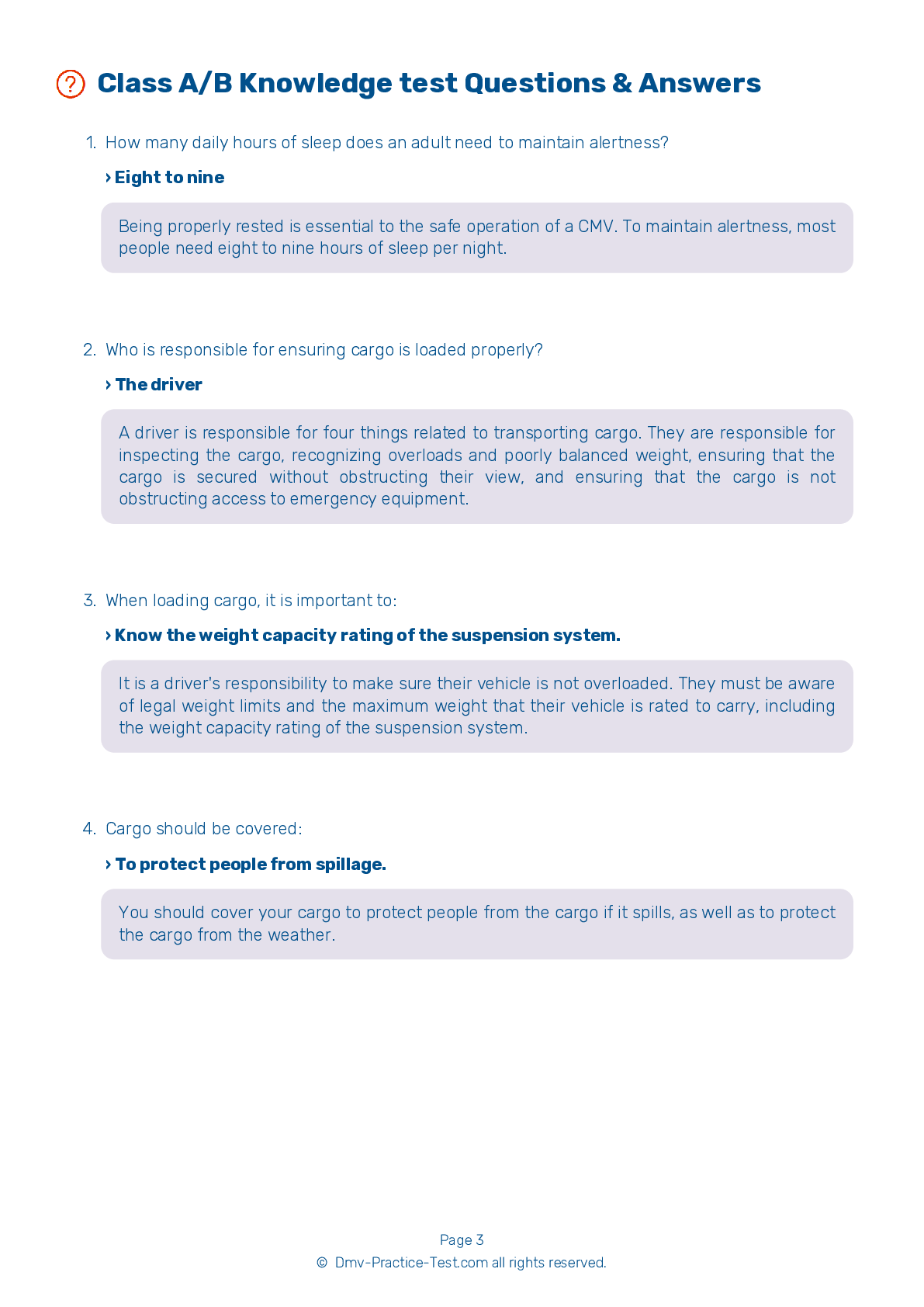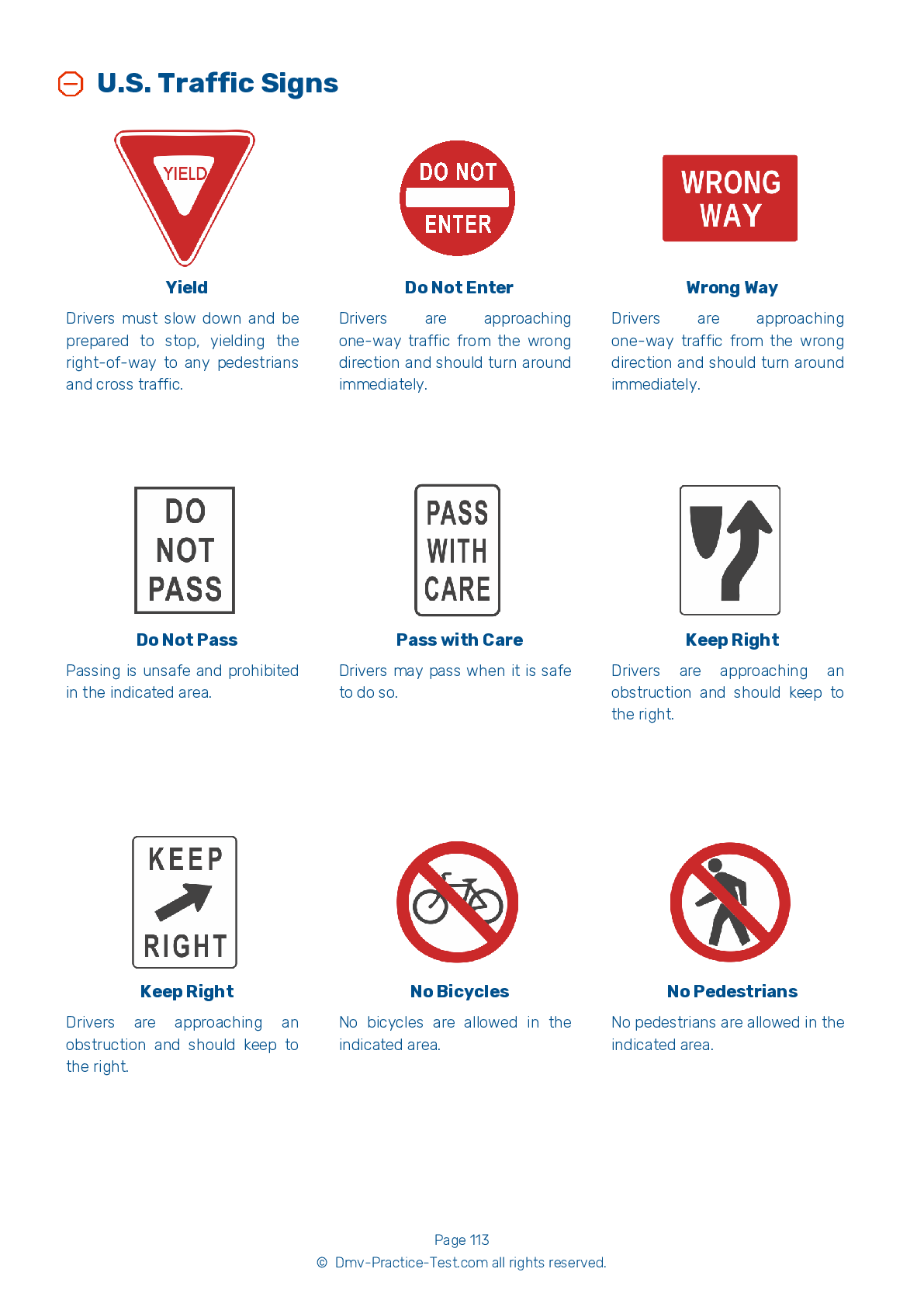Passenger #1
Passenger Endorsement | Vermont 2026 #1 Page 3 of 3
Train for FREE with our Vermont CDL passenger endorsement practice test online. The official exam test consists of several obligatory parts, with all of them checking your knowledge of different blocks of road rules. If you need to obtain a VT DMV passenger endorsement in 2026, practice as much as possible. Free sample tests published on our website will help you check and improve your knowledge and boost your grades. Please bear in mind that DMV requirements for issuing a CDL permit with passenger endorsement may vary from state to state.
20
16
20
15 . Backing with a trailer is dangerous because:
Trailers are not made to be driven in reverse.
Backing is always dangerous because it is impossible to see everything that is behind your vehicle. Only drive in reverse if it is absolutely necessary.
16 . Which of the following is acceptable if found during a pre-trip inspection?
Be sure to thoroughly inspect your tires before a trip. Tire sizes should not be mismatched, and tires should not be cut, cracked, or otherwise damaged in any way.
17 . As part of a pre-trip inspection, you should look for all of the following, except:
When inspecting your tires, verify that there is tread depth of at least 4/32 of an inch in every major groove on the front tires and tread depth of at least 2/32 of an inch in grooves on the other tires. Be sure that your tires are not too worn, are not cracked, have proper air pressure, and are all equally sized.
18 . While driving, gauges are:
While driving, you should watch your vehicle's gauges for signs of trouble. Be sure to inspect your gauges before beginning a trip to ensure that they are in proper working order.
19 . Rough acceleration:
Always speed up smoothly and gradually so that your vehicle does not jerk. Rough acceleration can cause mechanical damage.
20 . Rust around wheel nuts may mean:
Rust around wheel nuts can indicate that the nuts are loose. If you find rust near the wheel nuts, check their tightness before beginning to drive.
2026 Vermont | Frequently Asked Questions
A CDL Class A license in Vermont is defined as a commercial driver's license that allows the holder to operate any combination of vehicles with a Gross Vehicle Weight Rating (GVWR) of 26,001 pounds or more, provided the GVWR of the vehicle(s) being towed exceeds 10,000 pounds. This typically includes tractor-trailers and truck and trailer combinations.
A Class A CDL license in Vermont allows the holder to operate vehicles such as tractor-trailers, truck and trailer combinations, tank vehicles, livestock carriers, and flatbeds. It covers any combination of vehicles with a Gross Vehicle Weight Rating (GVWR) of 26,001 pounds or more if the towed vehicle is over 10,000 pounds.
To obtain a Class A CDL license in Vermont, you must be at least 18 years old (21 for interstate driving), have a valid driver's license, pass a vision exam, and pass the General Knowledge test. You must also pass the Combination Vehicle test and a Pre-Trip Vehicle Inspection test. Lastly, you'll need to pass a skills test in the vehicle type that fits a Class A license.
In Vermont, you must be at least 18 years old to qualify for a Class A Commercial Driver's License (CDL) for intrastate driving (within Vermont only). However, you must be at least 21 years old to drive interstate (across state lines), carry hazardous materials, or transport passengers.
Specific endorsements aren't required for a Class A CDL license in Vermont, but they can provide additional driving privileges. For instance, if you plan to haul hazardous materials, transport passengers, or drive tank vehicles or double/triple trailers, you would need to obtain the corresponding endorsements by passing specific knowledge tests.
The Class A CDL skills test in Vermont has three parts: the Vehicle Inspection Test, the Basic Vehicle Control Test, and the On-Road Driving Test. The test assesses your ability to inspect your vehicle before driving, control the vehicle during different maneuvers, and drive safely in various road and traffic conditions.
Yes, there are limitations for Class A CDL license holders in Vermont. For instance, drivers under 21 can only operate within Vermont (intrastate). Also, certain endorsements like HazMat require a driver to be at least 21. Furthermore, drivers are subject to strict blood alcohol content levels and may face severe penalties for violations.
In Vermont, the written Class A CDL test is primarily offered in English. However, some locations may offer the test in other languages. It's best to contact the local DMV office directly to inquire about language options. For non-English speakers, an interpreter service may be available but it's subject to certain rules and restrictions.
Yes, you can request accommodations for the Class A CDL written test in Vermont if you have a disability. The Vermont DMV is committed to providing equal access to all services, including testing accommodations. These may include sign language interpreters, extended testing time, or tests in alternative formats. Contact your local DMV office to discuss your specific needs.
Yes, if you don't pass the Class A CDL written test in Vermont, you can retake it. However, you must wait at least one day before retesting. There is also a retesting fee that you'll need to pay each time. It's advisable to review your study materials thoroughly before attempting the test again.



